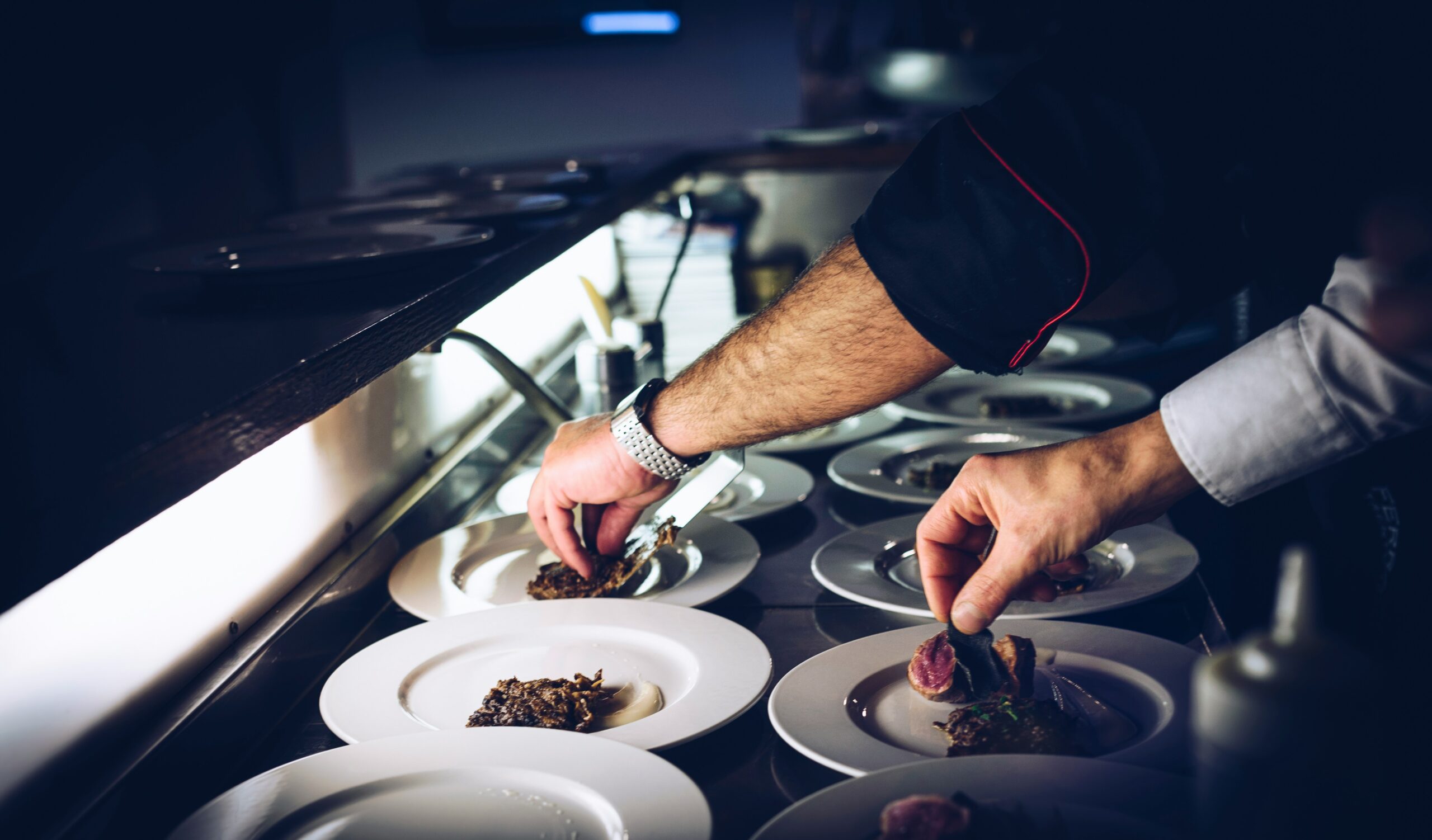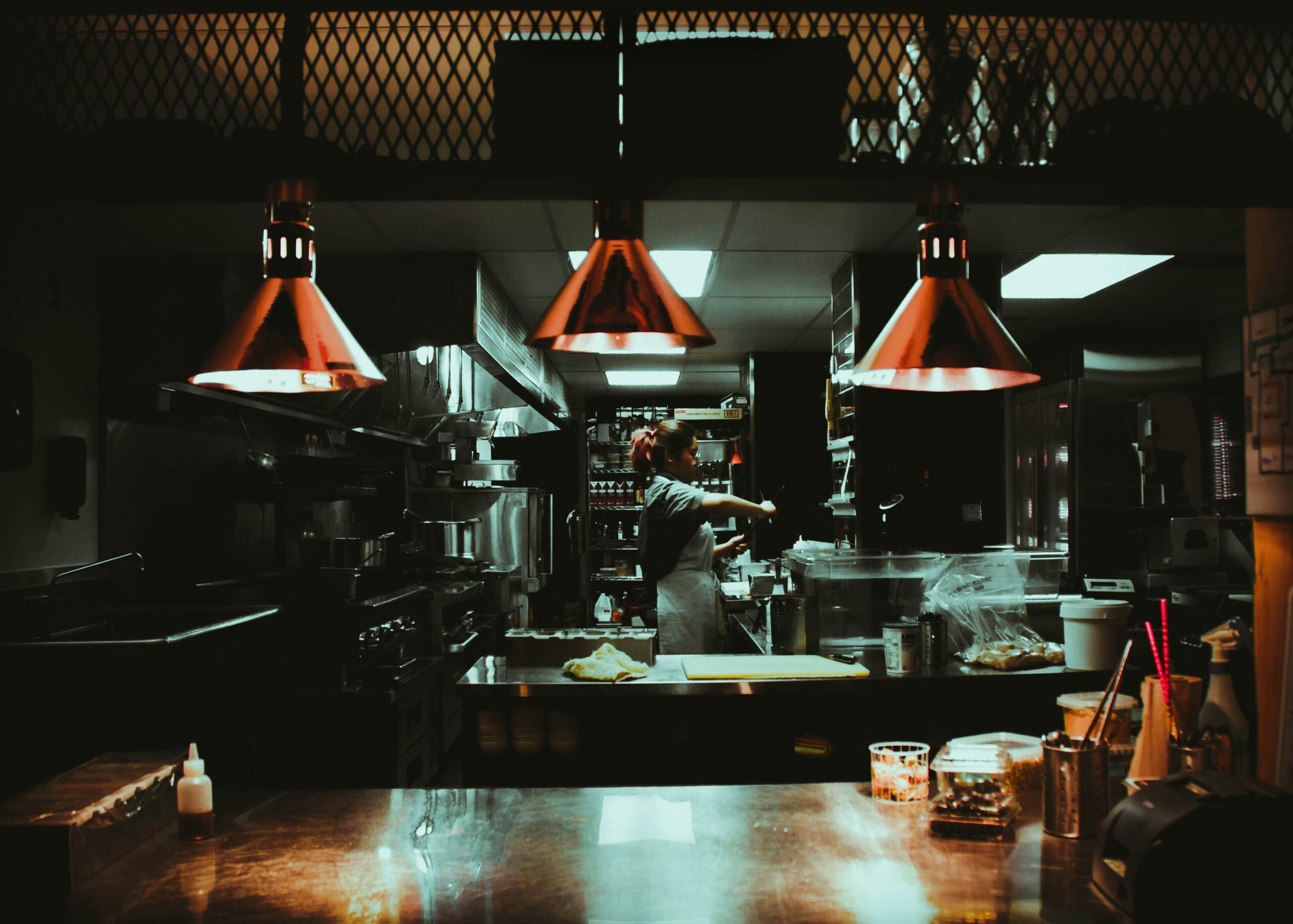If you’re preparing food in a professional environment, then you’ll need to take safety seriously. Here, we’re not just talking about the safety of your customers, but that of your staff, too.
Let’s take a look at five important precautions and considerations that will limit your risk, and help you to build a productive kitchen environment that doesn’t compromise on safety.

Hazards from Machinery
The average kitchen is filled with objects and machines that, if mishandled or malfunctioning, can inflict serious injury. You might think of chef’s knives, julienne slicers, mincers, grinders, and anything else with a sharp edge. Anything that can cut through meat can cut through human flesh – and so it’s a good idea to provide training to new, experienced members of staff.
This training should extend to the safe operation of machinery, and how that machinery can be instantly shut down in an emergency. Safety buttons and switch training is vital when it comes to fast paced and sharp machinery and so emergency stop switches that shut off a equipment quicky are essential.
Of course, the machines themselves should be looked after, too. Schedule regular maintenance, and keep a record of it.
Slips, Trips, and Falls
A sizeable number of workplace injuries result from slips, trips and falls. In a kitchen, this is even more of a danger, since water can often be spilled – and cleaning is often necessary for sanitation and food safety reasons.
Cleaning supplies should be accessible, and they should be used whenever appropriate. But staff should be advised when cleaning is in process, and non-slip flooring should be installed, particularly around gas stoves and other high-risk appliances. Loose cables, boxes, and other floor-based equipment should be cleared away, too.
Repetitive Strain and Musculoskeletal Disorders
You might more readily associate repetitive strain injury with office workers, who sit at a desk and type throughout the day. But injury can also result from kitchen equipment and techniques that make use of the same limited motion. You might think of onion slicing or dough kneading.
Kitchen staff should be encouraged to proactively prevent injuries by keeping active and healthy. Take regular breaks, employ proper lifting techniques, and listen to the signals provided by the body.
Food Contamination and Hygiene
Proper sanitation is essential in the kitchen. This is often a matter of developing the right habits and procedures, and keeping the right supplies to hand. Hair nets should be worn, and long nails should be forbidden. Make sure that your labelling system is robust and reliable, and check the fridge often to see whether stock is being appropriately rotated. Failure here can cause harm to customers – which can bring about expensive legal action, as well as reputational costs.
Chemical Exposure
Dealing with food-borne pathogens often means resorting to abrasive chemical cleaners. These come with risks of their own, and it’s important that these are guarded against. Make sure that cookware is appropriate, and not liable to alter the content of the food you’re cooking. Make sure that ventilation is adequate, and that PPE is provided (along with the instructions necessary to use it effectively).

